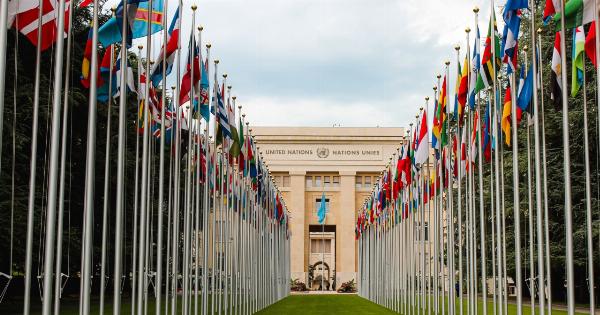Mediterranean Anemia, also known as Thalassemia, is a genetic blood disorder that affects the production of hemoglobin, a crucial protein responsible for carrying oxygen in the blood.
This condition primarily affects individuals of Mediterranean, African, Middle Eastern, and Southeast Asian descent. The stigma surrounding Mediterranean Anemia often leads to misconceptions, delays in diagnosis, and inadequate preventive measures.
Breaking this stigma is essential, as prevention plays a pivotal role in managing and minimizing the impact of this hereditary disease.
Understanding Mediterranean Anemia
Thalassemia exists in two forms: alpha thalassemia and beta thalassemia. Both types result from specific gene mutations that affect the production of hemoglobin.
Alpha thalassemia occurs when genes that code for the alpha chain of hemoglobin are mutated, leading to reduced or absent production of alpha globin chains. On the other hand, beta thalassemia arises from mutations in the genes responsible for the beta chain of hemoglobin, leading to impaired or insufficient production of beta globin chains.
Prevalence and Genetics
Mediterranean Anemia is particularly prevalent among populations hailing from regions in and around the Mediterranean Sea. These areas include Southern Italy, Greece, Turkey, Cyprus, and parts of the Middle East.
The prevalence of the disease can also be observed in other parts of the world with significant populations of Mediterranean origin.
The condition is inherited in an autosomal recessive manner, which means that both parents must carry the mutated gene to pass it onto their children.
Carriers of the Thalassemia gene, also known as carriers or trait individuals, usually show no symptoms of the disease. However, if two carriers have children, there is a 25% chance that each child will be born with Thalassemia major, the most severe form of the disease.
Recognizing Symptoms
The severity of Mediterranean Anemia symptoms can vary widely depending on the specific type and the number of mutated genes inherited.
Individuals with Thalassemia major usually display more significant symptoms, while those with Thalassemia minor, often referred to as Thalassemia trait, may exhibit mild or no symptoms at all.
Common symptoms of Mediterranean Anemia include:.
- Fatigue and weakness
- Pale or yellowish skin
- Shortness of breath
- Irritability
- Delayed growth and development in children
- Enlarged spleen
- Bone deformities (particularly in the face)
Complications and Health Risks
Unmanaged Mediterranean Anemia can lead to several complications and health risks. One of the most concerning complications is severe anemia, where an insufficient supply of healthy red blood cells hinders the body’s ability to function properly.
Chronic fatigue, shortness of breath, and poor physical endurance are common symptoms of severe anemia.
Individuals with Thalassemia major may also experience frequent infections and an increased susceptibility to specific diseases.
Iron overload is another potential complication, as the regular blood transfusions required by Thalassemia major patients can lead to a buildup of excess iron in the body. Iron overload can damage vital organs such as the heart, liver, and endocrine system.
Educating and Dispelling Misconceptions
Breaking the stigma surrounding Mediterranean Anemia begins with education and dispelling misconceptions. Many individuals mistakenly believe that Thalassemia is a contagious disease or that it can be caused by inadequate nutrition or poor parenting.
These misconceptions contribute to the stigma and discrimination that individuals with Mediterranean Anemia often face.
By educating the public, healthcare professionals, and affected communities, it becomes possible to foster a more inclusive and supportive environment.
Knowledge about the genetic nature of Mediterranean Anemia, its symptoms, and the importance of prevention can aid in eradicating misconceptions and reducing the impact of the disease on affected individuals and their families.
Prevention and Genetic Counselling
Prevention is the key to combating Mediterranean Anemia. Genetic counseling and carrier testing play crucial roles in preventing the birth of children with Thalassemia major.
Carrier testing allows individuals to determine if they carry the Thalassemia gene, providing vital information for family planning and making informed decisions.
With advancements in genetic testing, it has become easier to identify carriers and individuals at risk. Screening programs and premarital genetic testing have proven effective in regions where Thalassemia is prevalent.
Genetic counseling empowers couples to make informed choices, such as opting for in-vitro fertilization with preimplantation genetic diagnosis or considering alternative options like adoption.
Support Networks and Advocacy
Establishing support networks and promoting advocacy initiatives are crucial steps towards breaking the stigma associated with Mediterranean Anemia.
Support groups provide a safe space for individuals with Thalassemia and their families to share experiences, seek emotional support, and access relevant information.
Advocacy efforts work towards raising public awareness and encouraging governments to invest in preventive measures, carrier screening programs, and accessible healthcare resources.
Advocacy also aims to secure funding for research, treatment, and improving the quality of life for individuals with Thalassemia.
Treatment and Management
While prevention is the primary goal, those born with Thalassemia major require proper management and treatment throughout their lives. Treatment often involves regular blood transfusions to replenish healthy red blood cells and manage anemia.
Chelation therapy is also administered to prevent iron overload caused by frequent blood transfusions.
Additionally, individuals with Thalassemia major may require other treatments such as folic acid supplements, medications to stimulate the production of fetal hemoglobin, and surgery for complications like an enlarged spleen.
A multidisciplinary approach involving hematologists, geneticists, and other specialists is essential for the comprehensive management of Thalassemia.
Conclusion
Mediterranean Anemia is a significant health concern, particularly in populations with a high prevalence of Thalassemia.
Breaking the stigma associated with this genetic blood disorder is crucial for promoting early diagnosis, prevention, and improved quality of life for affected individuals and their families. By educating communities, dispelling misconceptions, and advocating for preventive measures, we can work towards creating a supportive and inclusive environment where Thalassemia is understood and managed effectively.






























